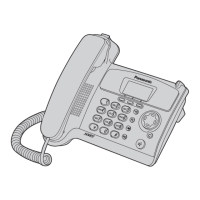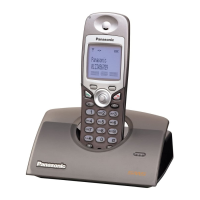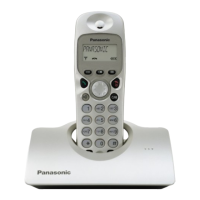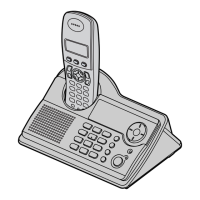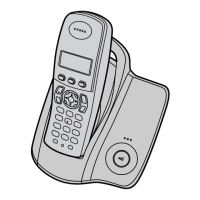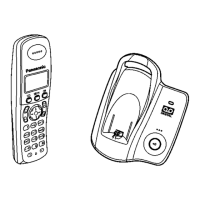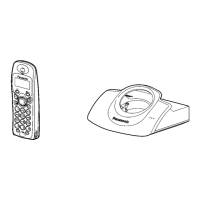In the standby mode, Q4 is open, and connected as to cut the DC loop current and to cut the
voice signal. The unit is consequently in an on-hook condition.
When IC2 detects a ring signal or press SP Key or pick up Curl Cord Handset or press the TALK
Key onto the handset, Q5 turns on and then Q4 turns on, thus providing an off-hook condition
(active DC current flow through the circuit) and the following signal flow is for the loop current.
- A D3 Q4 R34 Q8 R45 R46 D3 B [OFF HOOK]
20.4. Transmitter/Receiver
Base Unit and Cordless Handset mainly consist of RF Module and DECT BBIC.
Base Unit and Cordless Handset transmit/receive voice signal and data signal through the
antenna on carrier frequency.
Signal Pass:
*Refer to SIGNAL ROUTE ().
20.4.1. Transmitter Block
The voice signal input from the TEL LINE interface goes to RF Module (RFM1) through DECT
BBIC (IC2) as shown in BLOCK DIAGRAM (BASE UNIT) ()
The voice signal passes through the analog part of IC2 where it is amplified and converted to a
digital audio stream signal. The burst switch controller processes this stream performing
encryption and scrambling, adding the various other fields to produce the GAP (Generic Access
Profile) standard DECT frame, assigning to a time slot and channel etc.
In RFM1, the carrier frequency is changing, and frequency modulated RF signal is generated
and amplified, and radiated from antenna. Cordless Handset detects the voice signal or data
signal in the circuit same as the following explanation of Receiver Block.
20.4.2. Receiver Block
The signal of 19.2 MHz band (18.81792 MHz ~ 18.97344 MHz) which is input from antenna is
input to RFM1 as shown in BLOCK DIAGRAM (BASE UNIT) ().
In RFM1, the signal of 19.2 MHz band is downconverted to 864 kHz signal and demoduleted, and
goes to IC2 as GAP (Generic Access Profile) standard DECT frames. It passes through the
decoding section burst switch controller where it separates out the frame information and
performs de-encryption and de-scrambling as required. It then goes to the DSP section where it
is turned back into analog audio. This is amplified by the analog front end, and goes to the TEL
LINE Interface.
21. BLOCK DIAGRAM (CORDLESS HANDSET)
22. CIRCUIT OPERATION (CORDLESS HANDSET)
22.1. Outline
80
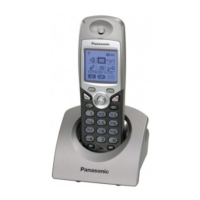
